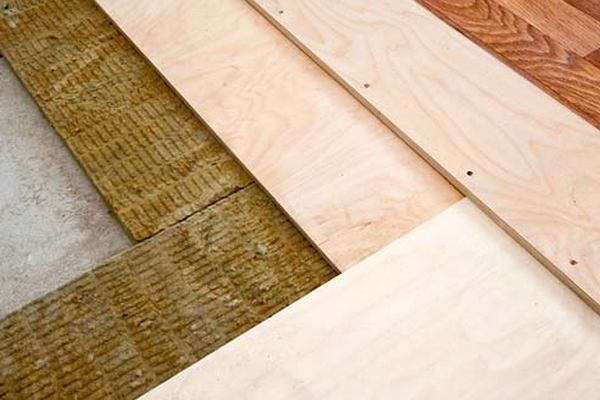Preparing the floor for sound insulation works
The first step is to rid floors of old coatings and concrete screed, if it was filled previously. That is, you need to walk up to the slab or sub-floor. On the stove may be present cracks that must be fixed before further events. Cracks plastered with normal cement-sand mortar. Also it is necessary to fill in the noticeable indentations on the floor. Then the perimeter of the room is placed on the adhesive tape made of polyethylene foam.
Installation of joists for insulation and finishing
Now it is necessary to form a basis for sound insulation and flooring. With this purpose, wooden beams with a thickness of 8-10 cm They are placed across the room in increments of 60-80 cm the easiest way to fasten the joists to the floor using metal angles and screws.
Bookmark noise insulation material
Between the joists is free space, which is used to embed sound insulation. It is best in this case to choose basalt or mineral wool. This material reliably absorbs extraneous noise and is environmentally friendly. It is important that the plate sound insulation cover included between the joists is extremely tight. There are no gaps to remain should not. If you avoid their occurrence failed, the gap is sure filled with foam.
In addition, the mineral wool must be covered with waterproofing material, so it was not subsequently spoiled. Very suitable for this plastic film that is laid over the joists and fastened with staples.
The dry screed flooring on the joists
Remains to prepare the surface for installation finish. For this purpose, the joists are made by MDF or chipboard. Another option is to cover them with boards, which will form the wall for decorative flooring materials. Paul will make a reliable, but will be well protected against contact with extraneous sounds in the room.
